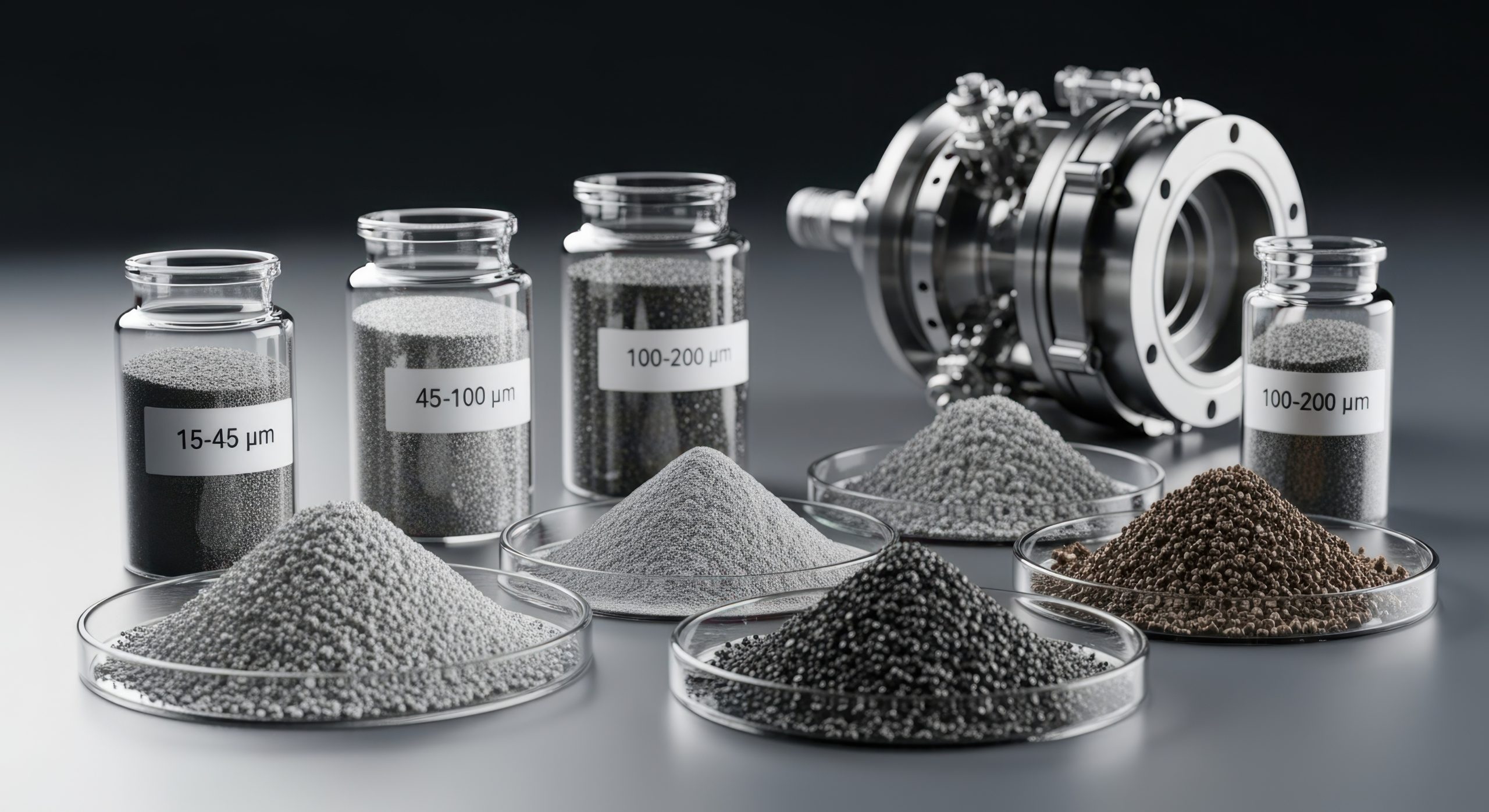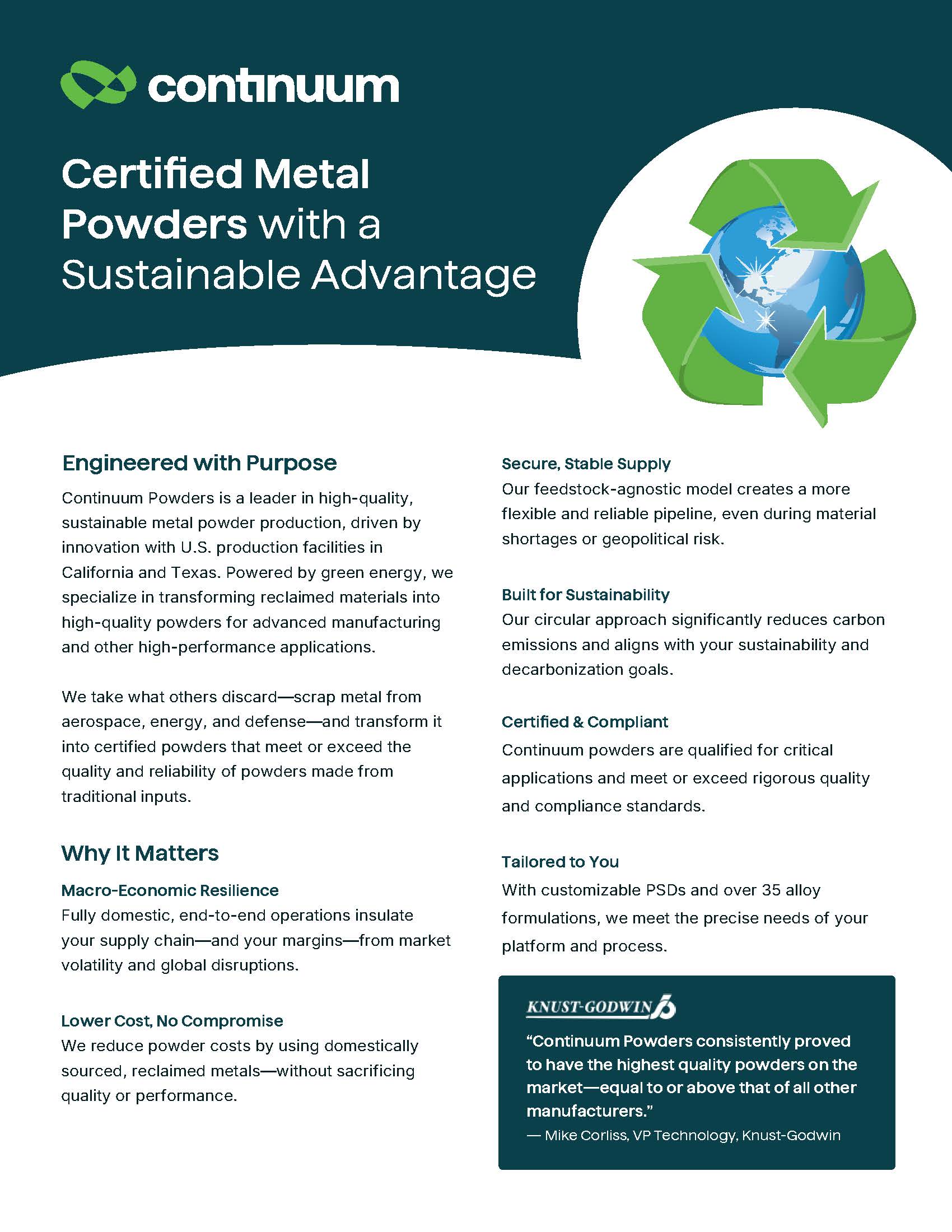As additive manufacturing (AM) transitions from prototyping to production, the availability of high-quality metal powders is becoming one of the most important factors shaping adoption. Aerospace, energy, and defense manufacturers cannot scale unless they have consistent access to powders that meet strict specifications for critical components. Yet today, many OEMs and service providers face bottlenecks not in machine capacity, but in powder supply.
Why Powder Availability Matters
Metal additive manufacturing places unique demands on feedstock. Particle size distribution, morphology, oxygen content, and flowability all directly impact build quality and mechanical properties. A deviation in powder consistency can lead to porosity, reduced fatigue life, or outright part rejection. For applications like turbine blades or structural airframe components, the tolerance for such variation is virtually zero.
When high-quality powders are in short supply, manufacturers face delays in production, difficulty qualifying processes, and increased overall costs. This makes reliable powder availability just as critical to AM adoption as machine throughput or post-processing capabilities.

The Bottleneck of Conventional Supply
Traditional powder production methods rely heavily on virgin metal inputs. These inputs are subject to global mining and refining cycles, which are themselves affected by demand spikes, geopolitical instability, and raw material costs. The result is a supply chain that can be inconsistent, both in terms of delivery timelines and price.
Even when powders are available, they are often produced in limited runs, creating challenges for customers who need repeatability across batches and geographies. Inconsistency in powder properties undermines one of the central promises of AM: repeatable part quality.
Continuum’s Approach to Commercial Availability
At Continuum, the focus is on ensuring both technical excellence and supply assurance. Using reclaimed aerospace-grade scrap as feedstock, Continuum’s Melt-to-Powder (M2P) process produces alloys that meet demanding specifications while reducing dependence on volatile virgin metal supply chains.
The approach provides two critical benefits:
- Steady access to in-demand alloys such as Ni718, Ti-6Al-4V, and M247.
- Consistency across production lots, achieved through controlled atomization, in-house chemistry, and strict process monitoring.
By ensuring powders are not only high quality but also commercially available in the volumes customers require, Continuum enables manufacturers to scale AM programs without worrying about whether the right powder will be available tomorrow.
Availability as Part of the Performance Equation
In critical industries, powder performance is not judged only by tensile strength or density. It is also measured by whether a supplier can provide that powder consistently, in the quantities needed, and at the specifications required. A powder that performs well in the lab but cannot be delivered at scale is of limited value to production programs.
Reliable Supply, Reliable Production
For advanced manufacturers, the path to scale runs directly through powder availability. Reliable, high-quality powders ensure that AM can move beyond small-batch experimentation to production of parts that matter most. Continuum’s model, built on reclaiming high-grade scrap and ensuring supply assurance, provides a foundation for customers to expand without compromise.
